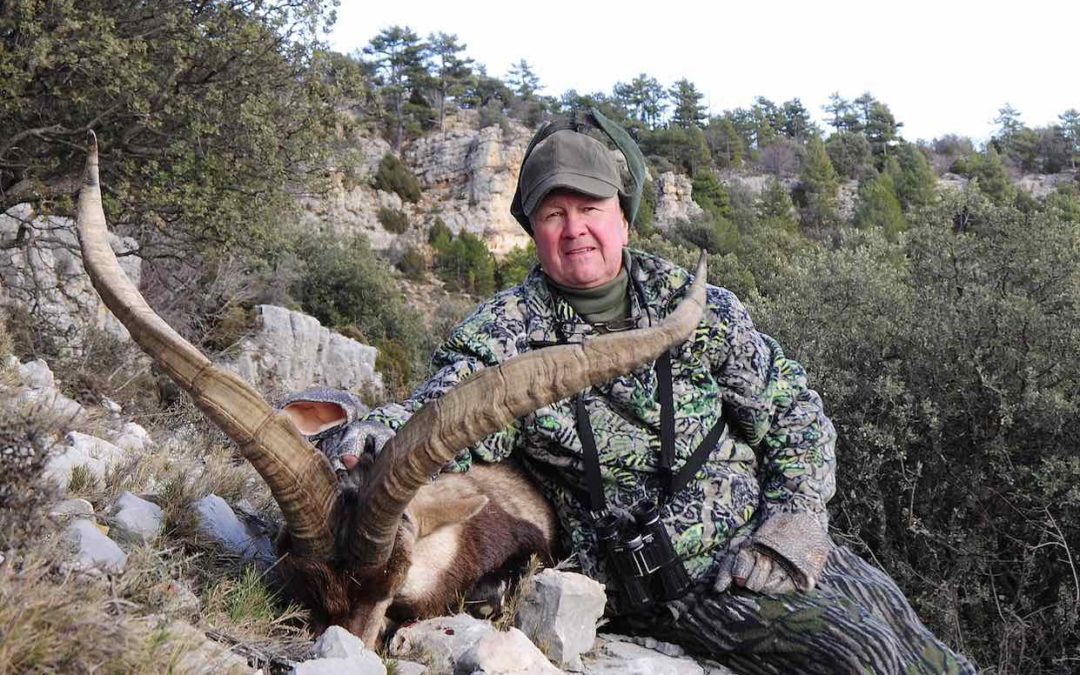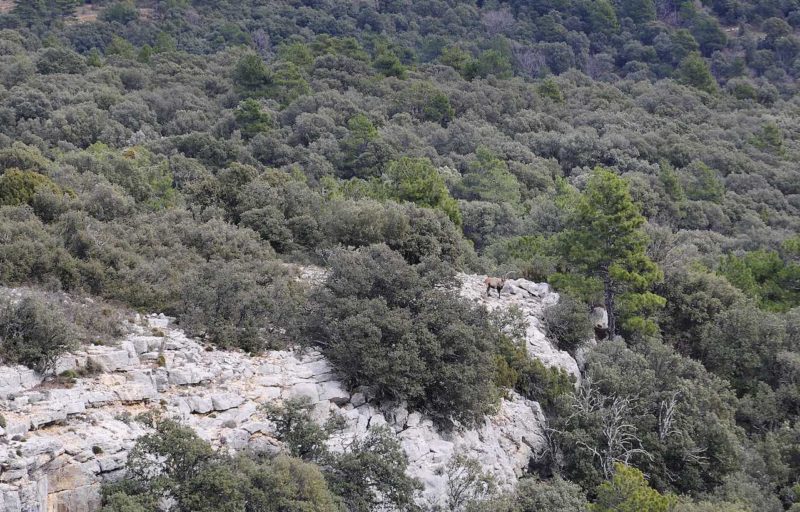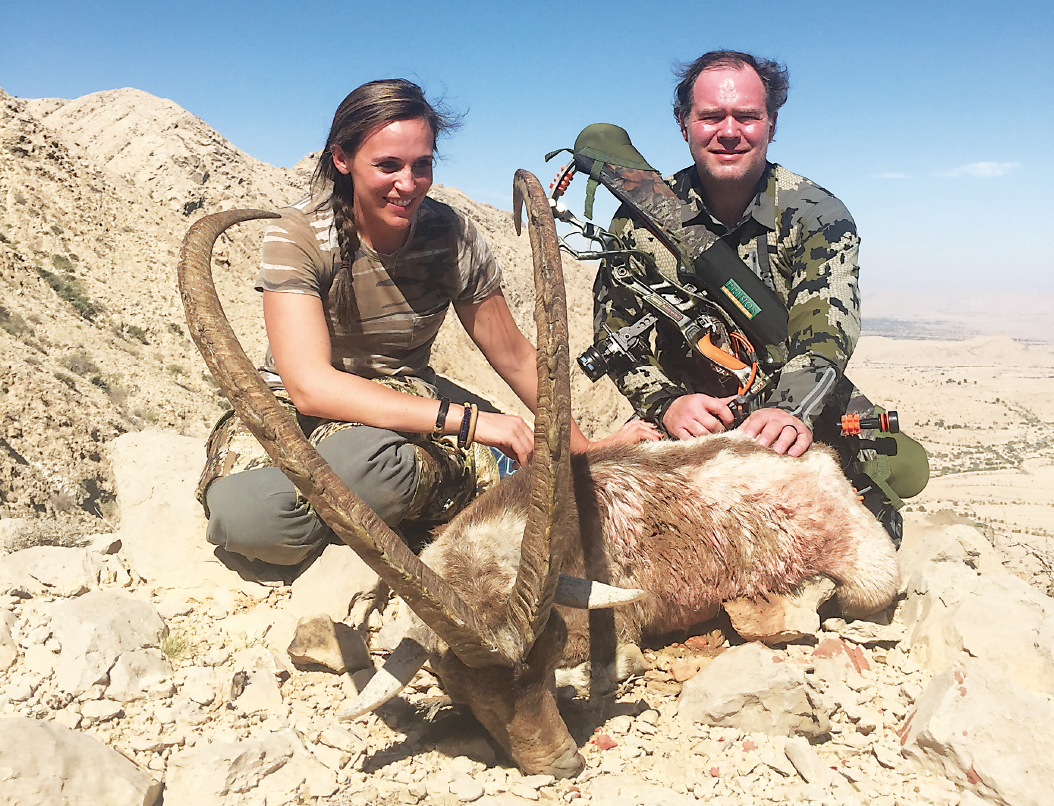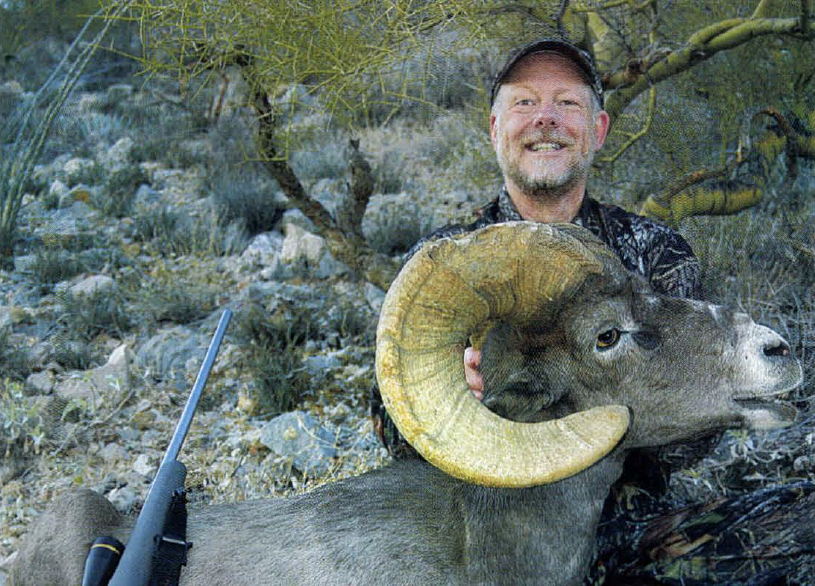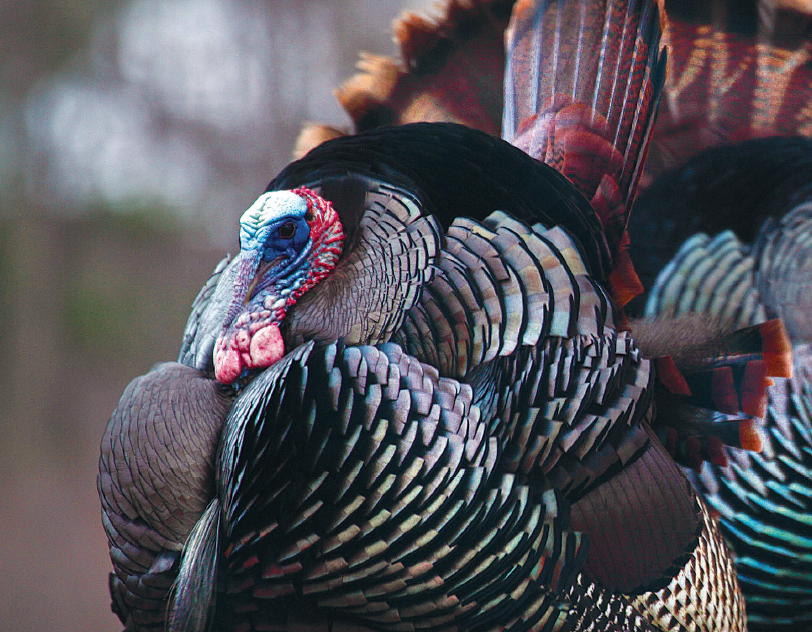Slowly negotiating our way over the side of a dangerously steep, boulder-ridden mountain, we spied a herd of ibex in the distance, feeding on the same slope.
With daylight fading on a dangerously rocky slope in the Beceite Mountains of Spain, pessimism ran rampant in my mind as my guides and I incessantly glassed a herd of ibex in hopes of locating a last-minute opportunity to take one of the mountain denizens.
I’ve always had the desire to hunt the majestic ibex, but it was not until I met my good friend Vicente Gil, professional hunter and owner of Caza Hispanica in Spain, on one of my annual trips to the SCI convention, that it became reality.
Our flight over the Atlantic was uneventful until we landed in Paris, when thanks to less than competent ticket agents, we missed two flights and were forced to endure a 12-hour layover. At last they allowed my appropriately permitted rifle to be loaded on a plane headed to our destination—Valencia, Spain.
It was midnight before my wife Jan and I landed in Valencia, but we didn’t let that slow us down. We spent the next day nonstop touring the sparkling city on the Mediterranean, pausing only to enjoy some of its exquisite dining.
The following morning our interpreter picked us up and escorted us on the hour-and-one-half scenic drive north to the rocky, pine-tree-laden Beceite Mountains and our new residence in the four hundred-year-old Los Leones Hotel located in the quaint little town of Rubielos de Mora. Shortly after getting settled in, we caught up with one of Vicente’s local guides, Oscar Greg Ghet. Within an hour, we were negotiating a windy, narrow mountain road overlooking a deep canyon where we caught up with Vicente, who pointed out a magnificent ibex below us on the opposing side of the canyon.
I was visually salivating over the animal I had traveled across the Atlantic to see, but one of its long, wrinkled horns was broken off.
Several other goats were spotted before dark, but none exhibited the horns that satisfied my guide’s discretionary criteria. As dark, ominous clouds began to blanket the mountain slopes with snow later in the evening, we made our way back to the comforts of our ageless hotel. There we enjoyed fine wine along with luscious-tasting olives and an exquisite Spanish dinner before turning in.
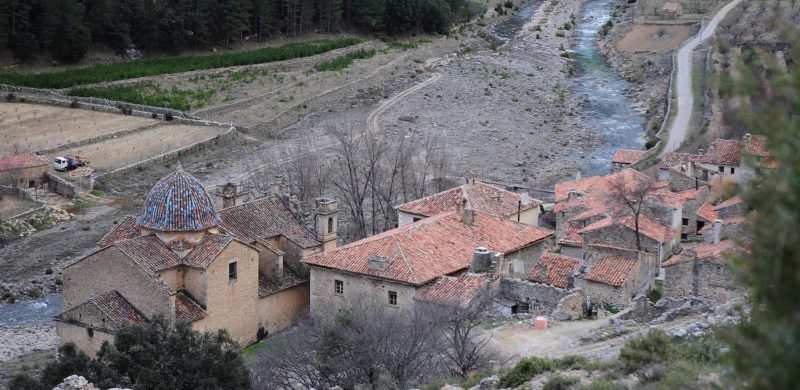
Nestled between two steep mountainsides, the opportunity to visit this quaint little village was one of the many highlights of our trip.
A light trace of snow and brutal winds in excess of 50 mph failed to discourage us the second morning as we stalked a herd of seven rams with several shooters. But the intense, erratic winds hampered our approach and the sure-footed animals descended a steep canyon wall, disappearing into the vegetative jungle below.
As ibex movement slumped in the biting cold afternoon, our guide took us on a short sightseeing tour to Estrella. A petite desolate community on the bank of a beautiful creek, it sits between two steep mountainsides littered with ubiquitous rock walls built by hand hundreds of years ago to stabilize the soil.
While in the village, we met the elderly couple who oversaw a classic 200-year-old Catholic Church, still a place of worship albeit twice a year. The opportunity to enter the ancient place of worship was truly one of the many unexpected highlights of our trip!
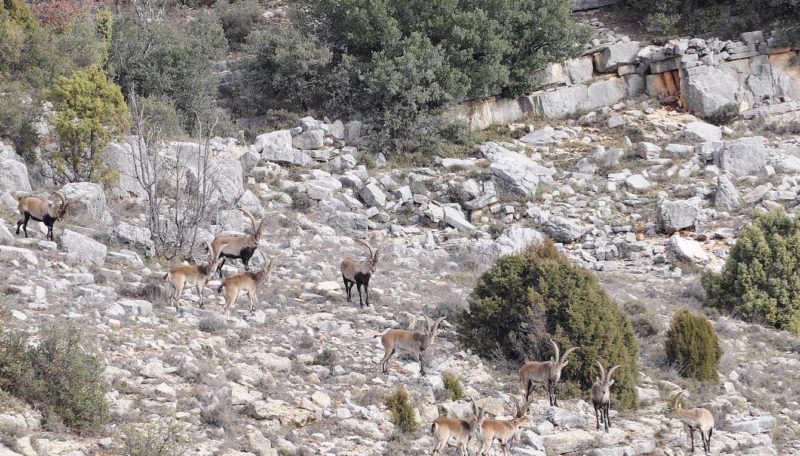
With the appearance of sunlight after days of ominous dark clouds, ibex popped out like mushrooms to enjoy a respite from the brutal cold and strong winds.
The following day, our third, Vicente and I hunted together. Early in the morning, we spotted an outstanding ram bedded down on a rocky but heavily vegetated bluff. However, a heavy snowstorm reduced our visibility to only a few yards. Hiking upwards in deep snow towards our last sighting of the animal, we stalked within 50 yards of a herd of 15 rams. They were bedded down amongst huge boulders to avoid the biting cold winds, but they remained only long enough for us to see several mature rams effortlessly dash up and over a dangerously steep canyon wall and disappear.
The entire afternoon was spent attempting to glass the adjacent canyon where we first spotted the largest ram, but excessive wind, combined with snowflakes that appeared like fireflies in our binoculars, inhibited the opportunity of relocating the animal.
At dark we four-wheeled back to Rubielos de Mora on a steep, almost impassable snow-covered road. Following our long day of climbing steep, rocky ledges with relentless cold wind in our faces, the warmth of the fireplace was as therapeutic as it was soothingly warm.
With temperatures below freezing on my fourth and last day of hunting, and a horrendous 60+ mph wind that cut like a knife, pessimism, or at least the realization that I may leave Spain without an ibex, began to surface.
With ice-packed roads leading to the area we had been hunting, we were forced to hunt another area. Without a single ram observed by noon, we slowly negotiated our way back over the semi-melted road to where we had seen a number of good rams on earlier hunts.
Upon our return, we were greeted by two extremely knowledgeable local guides, Sevino and Oscar, who excitedly told us of a fine ram they’d just located.
Through our spotting scope, we critiqued the ram bedded down with four others, just outside a dense stand of holly oaks. Then began a long, arduous stalk.
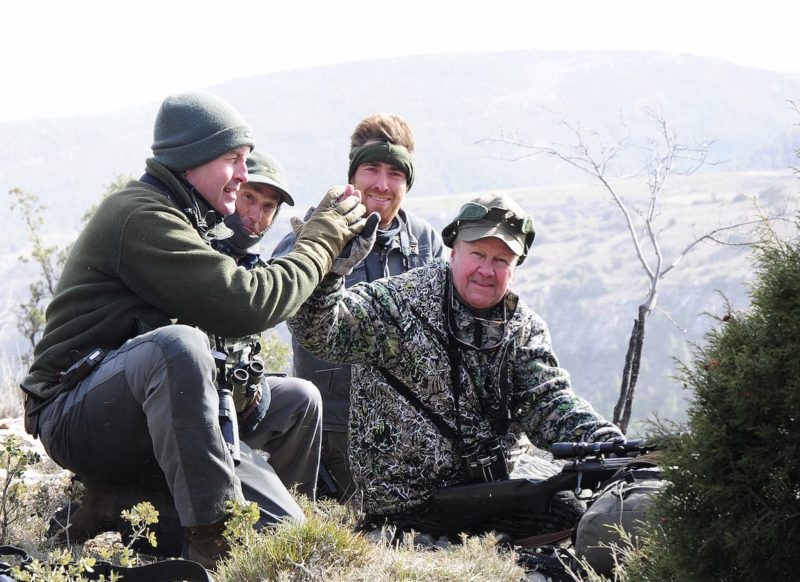
When my ram dropped to the rocky terrain, my team of guides erupted into jubilation, happy as I was for taking the animal.
Arriving at a vantage point 40 minutes later and 250 yards distant, I took a little too long to get a comfortable rest on a low-hanging pine branch. The animals detected my subtle movement, got up, and simply disappeared into a sea of low-growing oaks. Once again, thoughts of going home empty-handed became ever so real.
For the first time in three days, the sun appeared, but strong winds remained, and I couldn’t help but think that my failed attempt to take that ibex may be my last. With the appearance of sunshine, ibex suddenly began to pop up like mushrooms onto the egg-shaped boulders littering the landscape.
An hour later, slowly negotiating our way over the sunny side of a dangerously steep, boulder-ridden mountainside, we spied a herd of ibex in the distance, feeding on the same slope. Exercising caution not to disturb the animals in case a mature ram was among them, we were forced to exhaust valuable daylight while intensively scrutinizing the terrain, hoping to locate a trophy ram.
Oscar, hiking above us, suddenly spotted an exceptional ram bedded down, and pointed to it. Our view however, was obscured by the ubiquitous boulders. As young rams and ewes could be seen and heard negotiating their way down the dangerously steep canyon walls in the fading light, we rapidly negotiated our way up the steep slope to Oscar.
It wasn’t long before I was granted one last chance to take a ram. With my rifle resting on Oscar’s backpack, I realized another incredible outdoor memory, as my Gold Medal Beceite ibex collapsed onto the talus slope.
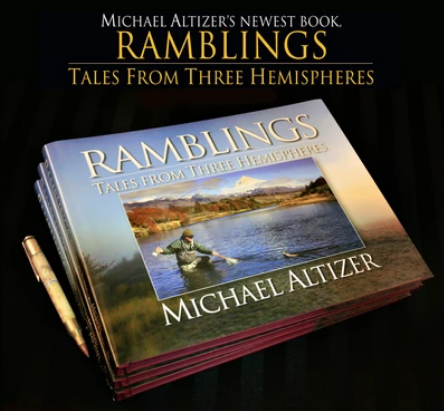 This beautiful new 240-page tabletop volume contains 189 lush black-and-white and duotone photographs, paintings, and drawings that richly document Michael Altizer’s contemplative and intimately composed accounts of his hunting and fishing journeys, from Patagonia to Alaska—along with the guns, fly rods, bows and friends with whom he shared the adventures. Buy Now
This beautiful new 240-page tabletop volume contains 189 lush black-and-white and duotone photographs, paintings, and drawings that richly document Michael Altizer’s contemplative and intimately composed accounts of his hunting and fishing journeys, from Patagonia to Alaska—along with the guns, fly rods, bows and friends with whom he shared the adventures. Buy Now

